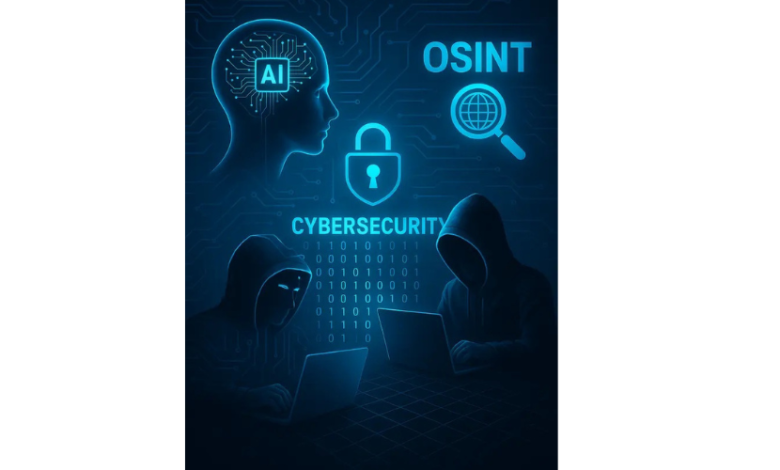
Why Discipline – Not Dazzling Tech – Separates the Fortified from the Breached
Stand inside any SOC this year and you’ll witness a kind of controlled pandemonium: analysts juggling three screens, anomaly graphs spiking like cardiograms, autonomous playbooks rewriting themselves while the coffee is still hot. At first glance the scene feels reassuring – surely this is what “cutting-edge” looks like. But peek through the other end of the telescope and you’ll see attackers running the same machine-learning models from a spare laptop, renting GPU time by the hour, and aiming that wizardry straight back at us.
That symmetry drives a hard truth home: success now turns less on budget, headcount or brand-name gear than on an almost old-fashioned virtue – discipline. Whoever applies it with monk-like focus wins. Everyone else becomes tomorrow’s breach headline.
From Mugshots to Motion Pictures
To grasp the shift, rewind to the era of signature-based antivirus. It was policing by wanted poster. If the malware’s face matched the photo, you drew your gun; if the criminal slapped on a a mustache, he walked right by.
One of my engineering clients learned the lesson the dramatic way. A contractor slid a USB drive into a workstation and unleashed a sparkling-new zero-day. The traditional AV blinked once, consulted its static signatures—and shrugged. What saved the day was a behavioral tool watching for privilege changes at weird hours. At 2:07 a.m. the account suddenly reached for domain-admin superpowers; the system snapped on the handcuffs and quarantined the host before a single byte crossed the firewall.
That single incident captures the new playbook: AI doesn’t wait for a mugshot; it scans for suspicious movement in real time, frame by frame, like a security camera that never sleeps.
Fast-Twitch Attackers and the OSINT Buffet
Unfortunately, adversaries love AI just as much—and often adopt it faster because they don’t answer to procurement committees. Consider the healthcare client whose oncologist received a seamless, almost tender email about a “time-critical research collaboration.” The prose mirrored her writing quirks perfectly, right down to her fondness for em-dashes. Moments later a voicemail followed, voiced by what sounded like her colleague—a subtle Boston accent, occasional throat-clearing, everything. Both artifacts were synthetic: text spun out by a large language model, audio stitched together by a text-to-speech engine. The reconnaissance feed? Public LinkedIn profiles, conference talks on YouTube, maybe a stray HR breach for seasoning. What used to take weeks of painstaking stalking now happens inside an API call.
Put differently, OSINT—the art of mining open-source intelligence—has gone from a shovel to a backhoe. If your public footprint contains a single crumb of personal detail, expect a model to vacuum it up and redeploy it against you.
The Discipline Playbook for AI Agents
So how does a defender survive a battlefield where both sides wield the same laser rifles? We start by treating every AI micro-service like a brilliant but impulsive intern: give it just the access it needs, scrub its inputs and outputs, and log everything in 4K.
- Least privilege. A log-analysis bot needs read-only access to syslogs, not the payroll database.
- Sanitize every prompt and every answer. Strip prompt-injection attempts and redact secrets before they hit the model.
- Log obsessively. If you can’t replay what the agent saw, said or did, you can’t answer your board—or the regulator—when something goes sideways.
- Quarantine sensitive output. Whether through automated classifiers or human review, make sure no customer PII or trade secret slips into an outbound response.
- Embed compliance gates—GDPR, CCPA, HIPAA—directly into your CICD pipeline, so legal alignment happens by design instead of by apology.
Shadow AI: The Midnight Copy-Paste Heist
Even companies that write zero lines of ML code face a quieter, almost invisible threat. Employees under deadline pressure paste draft NDAs, snippets of source code or next quarter’s product roadmap into free chatbots for “stylistic polish.” We audited one mid-sized firm and found that half the staff had tried public models in the past 90 days. Contracts, salary tables, research data—gone. One innocent paste became part of a public training set forever.
The fix blends tooling and culture. Enterprise subscriptions that promise “no training on your data” help, but only if people choose them over the shiny free version. Browser-level DLP can block sensitive copy-paste, yet staff still need a mental model: “If you wouldn’t email it to a competitor, don’t drop it in an AI prompt box.” Memorable, actionable, no PhD required.
Prompt Bombs and Hallucinated Truths
Large language models are born improvisers. In friendly use-cases they dazzle; in hostile ones they hallucinate or can be steered into spilling secrets. Prompt skepticism is now table stakes:
- If a chatbot asks for passwords or API tokens, slam the brakes.
- If it suggests running shell commands “for convenience,” shut the tab.
- If it delivers regulatory, medical or legal guidance, cross-check against a verified source before forwarding it to anyone.
Policies People Might Actually Read
Security policies fail when they read like tax code. Our AI Acceptable-Use document lives on a single page. Paragraph one explains the “why,” paragraph two lists the non-negotiables, and the whole thing takes less time to read than brewing an espresso. Every employee signs it annually—interns, execs, board members included. The fine print evolves with new laws, but the core stays fixed: use approved tools, protect sensitive data, assume the logs will be subpoenaed someday.
Compliance by Design, Not Confession
Regulators have limited patience for “We didn’t know the chatbot would store that.” The only workable answer is to embed compliance into the dev pipeline. A new AI micro-service can’t leave staging until the automated gate confirms encryption at rest, audit logging in place, and the privacy notice phrased exactly as legal drafted it. When engineers expect that hurdle, they design for it from sprint one and, paradoxically, move faster because no one is rewriting code the night before release.
Sword or Boomerang – Same Metal, Different Grip
Artificial intelligence is an amplifier. In disciplined hands it’s a scalpel – precise, surgical, life-saving. In careless hands it’s a boomerang laced with razor blades; throw it wrong and the first neck it finds is your own.
The pragmatic path forward starts with an unflinching telemetry sweep. Know exactly which workflows call which models, what they ingest, where they log, and how they redact. Treat your AI agents like you treat junior staff: daily supervision, clear boundaries, consistent education. Reward curiosity but institutionalize skepticism. Codify a culture where challenging AI output is not insubordination but professional hygiene.
Because in the end, enthusiasm is cheap. Discipline compounds. The organisations that pair bleeding-edge automation with old-school rigor will turn the neon chaos of today’s threat landscape into a lit stage where they call the cues – and attackers exit, confused and empty-handed.





